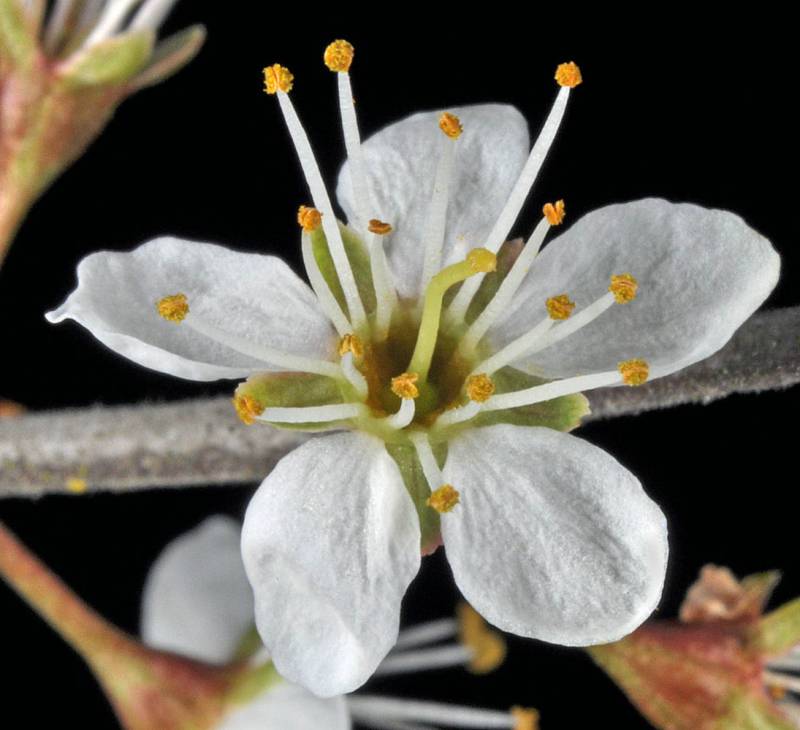Prunus persica
Prunus spinosa
peach
blackthorn
Leaves alternate, elliptic-ovate to obovate, finely serrate, 2-4 cm. long, not shiny.
Flowers solitary from each of the numerous nodes of the spur, appearing before the leaves;
pedicels glabrous, 10-15 mm. long;
calyx glabrous;
petals 5, white, oblong-obovate, 5-7 mm. long.
Drupe globose, deep bluish-purple, glaucous, 10-15 mm. broad; pit sub-globose, rough-pitted.
Prunus persica
Prunus spinosa
Occurring in scattered locations on both sides of the Cascades crest in Washington; southwestern British Columbia to California, east to Idaho; also in eastern North America.
Occurring in scattered locations on both sides of the Cascades crest in Washington; southwestern British Columbia to southern Oregon, east to Idaho.
- Local floras:
BC,
CA,
OR,
WA
- Local Web sites:
CalFlora,
CalPhotos,
Flora NW,
PNW Herbaria
WildflowerSearch
iNaturalist (observations)
USDA Plants Database
- LBJ Wildflower Center
- SEINet
- Plants of the World Online
- Encyclopedia of Life
- Wikipedia
- Google Image Search
- Local floras:
BC,
OR,
WA
- Local Web sites:
Flora NW,
PNW Herbaria
WildflowerSearch
iNaturalist (observations)
USDA Plants Database
- LBJ Wildflower Center
- SEINet
- Plants of the World Online
- Encyclopedia of Life
- Wikipedia
- Google Image Search



